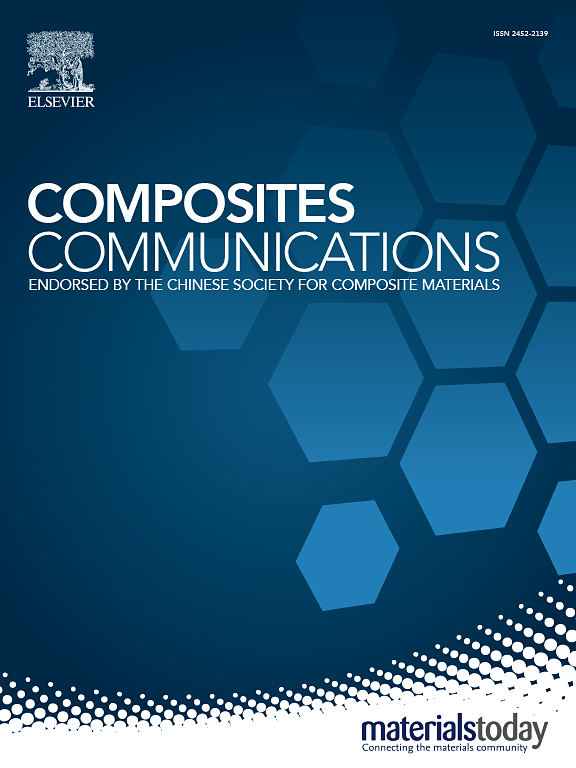Staggered distribution structure Cu-Mn catalysts for mitigating smoke and gas toxicity in combustion: Unravelling mechanistic insight through operando studies
IF 6.5
2区 材料科学
Q1 MATERIALS SCIENCE, COMPOSITES
引用次数: 0
Abstract
The integration of flame retardancy and environmental friendliness can be achieved by designing cost-effective, stable, and efficient catalysts to reduce smoke and toxicity during the combustion of polymeric materials. This work reports the development of non-precious metal catalysts for thermoplastic polyurethanes (TPU), which exhibit a significant reduction in smoke and gases toxicity while providing flame retardancy. The use of MgB2 as a support enables the in-situ growth of highly efficient Cu-Mn based catalysts, resulting in a remarkable 51.5 % decrease in total smoke release and a 49.1 % reduction in peak rate of CO generation of TPU according to cone calorimeter test results. Furthermore, Cu-Mn/MgB2 demonstrates an impressive 83.1 % reduction in total CO production rate during the steady-state tube furnace test. Additionally, density functional theory is employed to analyze the binding energy between catalysts and TPU as well as the adsorption energy of gases. This elucidates the rational reaction mechanism behind the catalyst and smoke inhibiting process. By combining transition metal oxide catalyzed CO oxidation reaction with polymeric material combustion, this study presents a promising approach for efficient smoke suppression with potential applications.
交错分布结构铜锰催化剂用于减轻燃烧中的烟气毒性:通过操作研究揭开机理之谜
通过设计具有成本效益、稳定且高效的催化剂,可在聚合物材料燃烧过程中减少烟雾和毒性,从而实现阻燃性和环境友好性的融合。本研究报告介绍了用于热塑性聚氨酯(TPU)的非贵金属催化剂的开发情况,这种催化剂在提供阻燃性能的同时,显著降低了烟雾和气体的毒性。使用 MgB2 作为载体可在原位生长高效的 Cu-Mn 催化剂,根据锥形量热计测试结果,TPU 的总烟雾释放量显著减少了 51.5%,CO 生成峰值率降低了 49.1%。此外,在稳态管式炉测试中,Cu-Mn/MgB2 的二氧化碳总产生率降低了 83.1%,令人印象深刻。此外,还利用密度泛函理论分析了催化剂与热塑性聚氨酯之间的结合能以及气体的吸附能。这阐明了催化剂和烟雾抑制过程背后的合理反应机理。通过将过渡金属氧化物催化的一氧化碳氧化反应与聚合物材料燃烧相结合,本研究提出了一种具有潜在应用前景的高效烟雾抑制方法。
本文章由计算机程序翻译,如有差异,请以英文原文为准。
求助全文
约1分钟内获得全文
求助全文
来源期刊

Composites Communications
Materials Science-Ceramics and Composites
CiteScore
12.10
自引率
10.00%
发文量
340
审稿时长
36 days
期刊介绍:
Composites Communications (Compos. Commun.) is a peer-reviewed journal publishing short communications and letters on the latest advances in composites science and technology. With a rapid review and publication process, its goal is to disseminate new knowledge promptly within the composites community. The journal welcomes manuscripts presenting creative concepts and new findings in design, state-of-the-art approaches in processing, synthesis, characterization, and mechanics modeling. In addition to traditional fiber-/particulate-reinforced engineering composites, it encourages submissions on composites with exceptional physical, mechanical, and fracture properties, as well as those with unique functions and significant application potential. This includes biomimetic and bio-inspired composites for biomedical applications, functional nano-composites for thermal management and energy applications, and composites designed for extreme service environments.
 求助内容:
求助内容: 应助结果提醒方式:
应助结果提醒方式:


